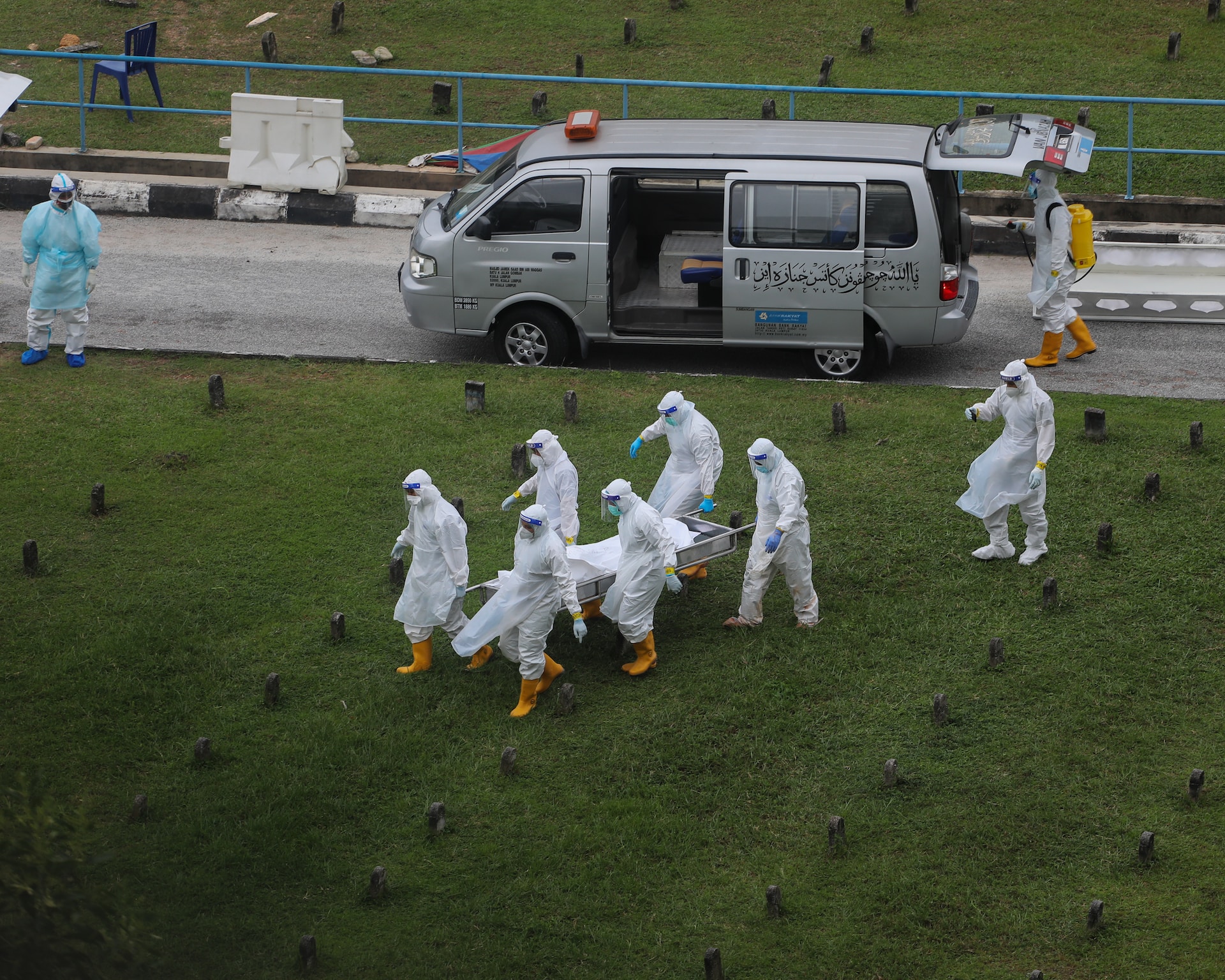The Antifragility Imperative: Risk Management Beyond the Triple Crisis
The years 2020 and 2021 will be remembered – with any luck – for their lessons in risk management. After a global pandemic that experts have long been expecting began to unfold in the early months of 2020, lockdowns and other restrictions plunged the world economy into a severe recession, exposing its systemic fragility. Then outrage over racial inequality and police brutality led to large-scale protests across the United States and in some other countries, again, exposing a deep-seated and longstanding systemic problem.
Different countries and organizations have shown different responses and levels of success in taking on these challenges. In terms of the pandemic itself, the various levels of preparedness among different countries and organizations are a fair indication of which will bounce back soonest. Epidemiologists have been warning for decades that such an occurrence was only a matter of time. A 14-year-old position paper published by the international insurance industry organization Chief Risk Officer Forum “Emerging Risks Initiative Position Paper, Influenza Pandemics” (CRO Forum 2007) is just one of many publications and statements that have detailed precisely the scenarios we are currently experiencing.
Aiming Higher Than Mere Damage Mitigation
In any case, recovery from this threefold health, economic and social crisis will take massive efforts. But as economies and societies begin to reopen and survey the damage, should we be asking how to get back to business as usual as soon as possible? What if we were to aim for more than robustness and resilience? What if we looked at systems that are actually strengthened by the stress of the crisis? As Stanford economist Paul Romer once stated, “A crisis is a terrible thing to waste.”
This concept, termed “antifragility” by Nassim Nicholas Taleb in his 2007 book “Antifragile” turns conventional risk management on its head. To illustrate the point, Taleb uses – among other examples – the colorful analogy of the mythical Hydra. “Hydra, in Greek mythology, is a serpent-like creature that dwells in the lake of Lerna, near Argos, and has numerous heads. Each time one is cut off, two grow back. So harm is what it likes. Hydra represents antifragility,” he writes.
Similarly, in the 2013 book “The Chaos Imperative: How Chance and Disruption Increase Innovation Effectiveness and Success,” Ori Brafman and Judah Pollack argue that chaos can trigger destruction that leads to innovation and growth. The authors offer the example – among others – of the Black Death in 14th-century Europe and how it demonstrated the equal vulnerability of nobility, members of the clergy and the general population, rich and poor. Over a period of approximately six years, the plague shook the very foundations of society, including mediaeval concepts of hierarchy and divine order. Among other effects, the decimation of workforces demanded greater cooperation. The plague, according to Brafman and Pollack, ultimately set the stage for the blossoming of the arts and science that became the Renaissance.
Antifragility is No Myth
As helpful as Nassim’s Hydra analogy may be in understanding the phenomenon, antifragility is by no means the stuff of myths. In fact, nature is teeming with antifragile systems and organisms. It could be said that antifragility is the nature of nature. Consider, for example, the humble potato: cut a potato into, say, two or three pieces and plant them. As many potato plants as pieces planted will grow, each bearing many more new potatoes. The system responds to the stress of being cut up with vitality and abundance. Similarly, severed limbs of many plants will readily sprout roots in soil or water. And anyone who works out knows that subjecting muscles to (controlled) stress leads to enhanced physical fitness. Muscle fiber is actually torn during exercise, and the body responds to this microtrauma by not only repairing the damage, but by building stronger muscles than ever – no pain, no gain.
Unfortunately, when it comes to technology and systems created by humankind, we have largely ignored the principles of biological antifragility. Our understanding of the world around us – the sum total of processes and natural laws – has been very limited. Instead of constructing systems that mimic it, we have built systems that are at odds with the antifragility of the natural world.
And yet, there are positive examples of antifragile technologies and systems. Robustness and resilience are routinely achieved in computing systems. Networks are designed with protective mechanisms. While these qualities cannot be termed antifragile (benefitting from stress) as such, any scenario that makes them more evident and attractive would have an overall antifragility effect by boosting efficiency and long-term viability.
In terms of the current crisis, we can easily see that the isolation and remote working requirements are driving digitalization to new levels. Not only are companies ramping up their digital infrastructures, but professionals are acquiring new skills and becoming increasingly comfortable with decentralized digital workspaces. With its impact on supply chains, the pandemic also underscores the advantages of decentralized sourcing – there are many cases of medical equipment being produced via 3D printing. A major chemicals company with experience in 3D printing has created thousands of high-quality protective face shields in staff members’ homes. In addition, as the situation makes strict top-down leadership and employee supervision virtually impossible, organizations are learning the advantages of empowerment and self-management. This concept, laid out in Frederic Laloux’s influential 2014 book “Reinventing Organizations,” is considered by many organizational development experts to be the next step in the evolution of work and productivity. These trends alone have huge potential for efficiency gains in practically all industries.
The Antifragility Imperative
The pandemic and its impacts on societies and economies have understandably eclipsed other issues. However, it is just one of many challenges humankind is facing. We need to ask ourselves not only how we can endure this crisis and emerge stronger once it passes, but also how we can leverage antifragile systems to counter developments that threaten the wellbeing of humankind and the entire planet. First and foremost, we need to take decisive action to address climate change. Put simply: antifragile solutions are not an option, they are a must.
As we have seen, digitalization and decentralized systems are already growing due to the crisis. In the political arena, the much-cited superior average performance of nations with female heads of state in dealing with the pandemic should send a long-overdue signal about the importance of gender equality in leadership. The fact that the crisis has drawn heightened attention to the importance of sound science, as can be observed in the popularity and trust won by Director of the National Institute of Allergy and Infectious Diseases Dr. Anthony Fauci (now also Chief Medical Advisor to the Biden Administration), could foster greater public and political support for science in general – a cornerstone of virtually all efforts to master global challenges. Similarly, as the pandemic casts a glaring spotlight on the failures of unequal and uncoordinated healthcare systems, it could add impetus to the global integrated care movement – a case made strongly in a recent paper by the International Foundation for Integrated Care. A further positive (antifragile) effect can be heightened investor interest in the technologies and concepts that are benefitting from the current situation.
This all adds up to an excellent starting point, a foundation to build on in pursuit of meaningful antifragility objectives. Let’s call the ultimate goal a “human-centered digital economy.”
Of course, none of this will happen by itself. To become reality, the human-centered digital economy must be seen not as an abstract vision or an aid project, but as a huge source of attractive investment opportunities.
Antifragility as an Investment Driver
A look at existing and emerging technological systems offers some insights into where the investable opportunities with the greatest potential for growth in the human-centered digital economy lie. Here, convergence of technologies deserves special attention. Virtually all game-changing innovations involve combinations of old and new as well as technology and human skills. The research methods used in efforts to develop drugs and vaccines to combat the coronavirus SARS-CoV-2 provide a good example. Fast-throughput screening (FTS) brings together scientists’ traditional lab skills with robotics and high-capacity data processing to conduct millions of tests simultaneously. Research projects that would otherwise take years or decades can be conducted within days or weeks. This convergence of technologies is finding increasing adoption in various fields, including the formulation of paints, coatings and personal care products.
As a further example, digital and vertical farming technologies combined with smart supply chains can exponentially increase global food supplies. At the same time, they cut down emissions by reducing land requirements and stepping up logistical efficiency. In broader terms, the Internet of Things (IoT) can boost efficiency and reduce environmental impact in practically any system that serves people today – from healthcare and transportation to banking and manufacturing. As mentioned above, 3D printing could experience a major surge in adoption due to the pandemic.
It is also interesting to note that the concept of antifragility is not new, even if different terms were used in the past. At the Santa Fe Institute in New Mexico, complexity models are used to explore collective intelligence, self- and community-organization as well as technology-based, economic, social, legal and other enablers and controls. Many of these ideas can be the basis for next-generation antifragile systems.
Examples abound in the corporate world as well. Intel Corporation has a history of – counterintuitively – increasing investment levels during each recession. When the recession ended, the company would emerge stronger than competitors that reflexively retrenched and emerged weaker. Intel has clearly demonstrated its antifragility, as a bedrock supplier of central processing units (CPUs) and integrated circuits (ICs) globally, while NEC, Fujitsu, Harris and others more or less faded away.
The time to act is now. Considering that the coronavirus pandemic is a passing – though recurrent – threat, we need to keep the most pressing challenges to humankind and the planet in focus. When the current crisis blows over, the knowledge we can gather now can make the difference between building a world that is less bad and building one that is antifragile – and fit for the future.
“You never change things by fighting the existing reality. To change something, build a new model that makes the existing model obsolete.” – Buckminster Fuller
This article is an update of an item published mid-2020. The article was written by Michael Durrie, Chief Content Officer, The Digital Economist.



